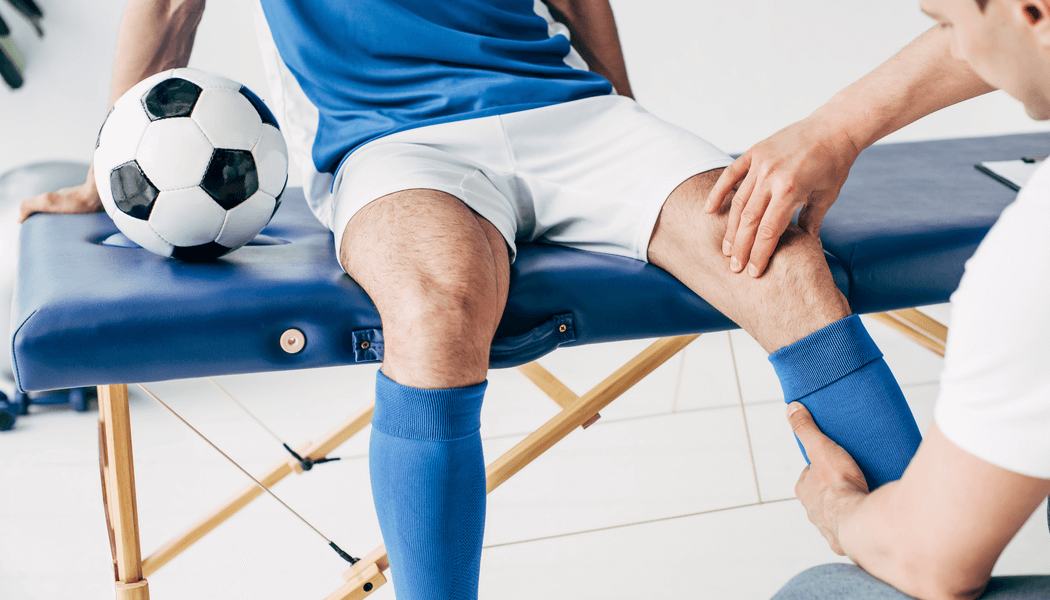Introduction to Physiotherapy in Sports
Physiotherapy plays a crucial role Physiotherapy in sports performance and minimizing the risk of injuries among athletes. Through a combination of specialized exercises, manual therapy, and education, physiotherapists help athletes achieve their peak performance while reducing the likelihood of injuries.
Physiotherapy, also known as physical therapy, encompasses a range of techniques aimed at improving movement and function while relieving pain. In the realm of sports, physiotherapy is essential for enhancing athletic performance and preventing injuries. By addressing musculoskeletal imbalances, improving flexibility, and optimizing biomechanics, physiotherapists ensure that athletes can perform at their best while minimizing the risk of injury.
Role of Physiotherapy in Enhancing Sports Performance
Preparing Athletes for Optimal Performance
Physiotherapists work closely with athletes to assess their physical condition and develop customized training programs. These programs focus on improving strength, flexibility, and endurance, ensuring that athletes are adequately prepared for the demands of their sport.
Improving Flexibility, Strength, and Endurance
Flexibility, strength, and endurance are essential components of athletic performance. Physiotherapy techniques such as stretching exercises, resistance training, and cardiovascular conditioning help athletes develop these attributes, allowing them to perform more effectively on the field or court.
Enhancing Balance and Coordination
Balance and coordination are critical for sports performance, as they enable athletes to move efficiently and react quickly to changing situations. Physiotherapists employ various exercises and drills to improve balance and coordination, reducing the risk of falls and enhancing overall athletic performance.
Injury Prevention Through Physiotherapy
Identifying and Addressing Muscular Imbalances
Muscular imbalances occur when certain muscles are stronger or more flexible than others, leading to increased stress on the joints and surrounding tissues. Physiotherapists conduct thorough assessments to identify these imbalances and prescribe targeted exercises to correct them, reducing the risk of overuse injuries.
Correcting Faulty Movement Patterns
Faulty movement patterns, such as poor running technique or improper lifting mechanics, can increase the risk of injuries in athletes. Physiotherapists use techniques such as biomechanical analysis and movement retraining to correct these patterns, allowing athletes to move more efficiently and safely.
Preventing Overuse Injuries
Overuse injuries are common in athletes who engage in repetitive movements or activities without adequate rest and recovery. Physiotherapists help athletes prevent overuse injuries by designing training programs that include sufficient rest periods, cross-training activities, and injury prevention exercises.
Rehabilitation of Sports Injuries
The Role of Physiotherapy in the Recovery Process
When injuries do occur, physiotherapy plays a vital role in the rehabilitation process. Physiotherapists work with athletes to develop personalized rehabilitation programs focused on restoring mobility, strength, and function while minimizing pain and swelling.
Techniques Used in Sports Injury Rehabilitation
Sports injury rehabilitation may involve a combination of techniques, including manual therapy, therapeutic exercises, modalities such as ultrasound or electrical stimulation, and sport-specific training drills. Physiotherapists tailor these techniques to the individual needs of each athlete, ensuring optimal recovery and return to sport.
Case Studies Illustrating Successful Rehabilitation Outcomes
Numerous case studies demonstrate the effectiveness of physiotherapy in rehabilitating sports injuries. From professional athletes recovering from major surgeries to weekend warriors overcoming minor sprains and strains, physiotherapy plays a crucial role in facilitating full recovery and restoring athletic performance.
Sports-Specific Physiotherapy Techniques
Tailoring Physiotherapy Interventions to Specific Sports
Different sports place unique demands on the body, requiring tailored physiotherapy interventions to address specific challenges and injuries. Physiotherapists with expertise in sports medicine understand the biomechanics and injury patterns associated with various sports and can customize treatment plans accordingly.
Examples of Sport-Specific Exercises and Treatments
Examples of sport-specific physiotherapy techniques include plyometric exercises for basketball players, shoulder stabilization exercises for swimmers, and agility drills for soccer players. By incorporating these exercises into training programs, physiotherapists help athletes improve performance while reducing the risk of injuries.
Integrating Physiotherapy into Training Programs
Collaborating with Coaches and Trainers
Effective communication and collaboration between physiotherapists, coaches, and trainers are essential for maximizing athletic performance and minimizing injuries. Physiotherapists provide valuable insights into athletes’ physical condition and progress, allowing coaches and trainers to adjust training programs accordingly.
Incorporating Physiotherapy into Periodization Plans
Periodization is the systematic planning of athletic training to optimize performance while minimizing the risk of overtraining and injuries. Physiotherapists play a crucial role in periodization by designing rehabilitation and injury prevention programs that align with athletes’ training cycles and competition schedules.
The Importance of Continual Assessment and Adjustment
Regular Monitoring of Athletes’ Physical Condition
Athletes’ physical condition can change rapidly due to factors such as training load, fatigue, and injury. Physiotherapists conduct regular assessments to monitor athletes’ progress and identify any signs of overuse or imbalances, allowing for timely intervention and adjustment of treatment plans.
Adjusting Treatment Plans Based on Progress and Setbacks
Flexibility and adaptability are essential qualities of effective physiotherapy practice. Physiotherapists continually reassess athletes’ responses to treatment and adjust their plans accordingly, ensuring that interventions remain effective and aligned with athletes’ evolving needs and goals.
Conclusion
In conclusion, physiotherapy plays a crucial role in enhancing sports performance and preventing injuries in athletes. By addressing muscular imbalances, correcting faulty movement patterns, and providing rehabilitation services, physiotherapists help athletes achieve their full potential while staying healthy and resilient.
FAQs
- How often should athletes undergo physiotherapy sessions?
The frequency of physiotherapy sessions depends on various factors, including the athlete’s injury history, training load, and competition schedule. In general, athletes may benefit from weekly or bi-weekly sessions during intense training periods, with adjustments as needed.
- Can physiotherapy help with non-sports-related injuries?
Yes, physiotherapy is beneficial for treating a wide range of musculoskeletal injuries and conditions, whether they occur in sports or everyday life. Physiotherapists can customize treatment plans to address the specific needs and goals of each individual.
- Is physiotherapy only for professional athletes?
No, physiotherapy services are available to athletes of all levels, from recreational enthusiasts to elite competitors. Whether you’re a weekend warrior or a professional athlete, physiotherapy can help you stay active, healthy, and injury-free.
- How long does it take to recover from a sports injury with physiotherapy?
The duration of recovery from a sports injury depends on various factors, including the type and severity of the injury, the individual’s overall health and fitness level, and adherence to the rehabilitation program. Physiotherapists work closely with athletes to optimize their recovery process and facilitate a safe return to sport.
- What qualifications should I look for in a sports physiotherapist?
When choosing a sports physiotherapist, look for someone with specialized training and experience in sports medicine and rehabilitation. Board certification and membership in professional organizations such as the American Physical Therapy Association’s Sports Physical Therapy Section are also indicators of expertise and quality care.



